MUMPS Release
Before proceeding with any release, be sure to receive certification from Steve Eagle to use the 1st floor wet lab or Harry Imm to use the cleanroom wet lab. Safety is the number one priority when worki
ng with such dangerous chemicals. Always proceed with caution and ask questions.
Click here to review material locations
Important Precautions and Safety Materials Needed
Eye Care
Chemical gloves (These are yellow and are at wet benches)
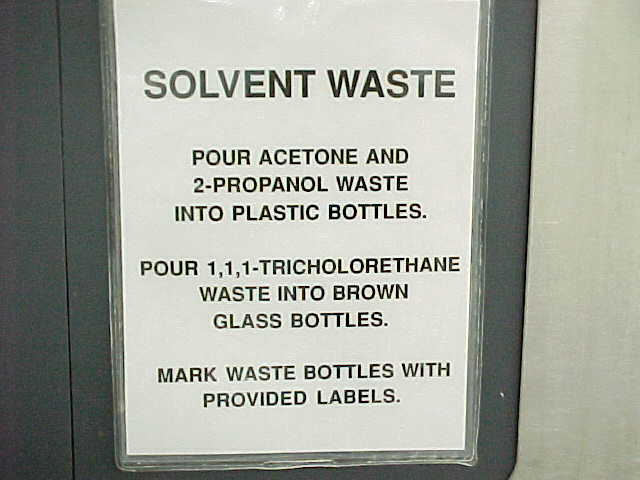
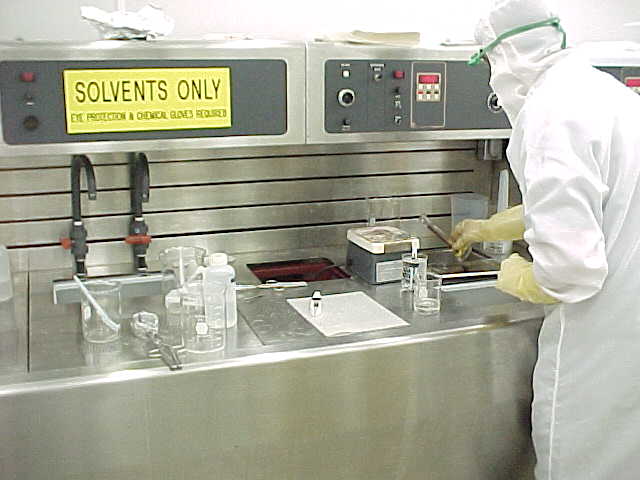
Make sure to keep solvents on the solvent bench marked "Solvents Only". When using acetone, methanol, etc. make sure to be on this bench.
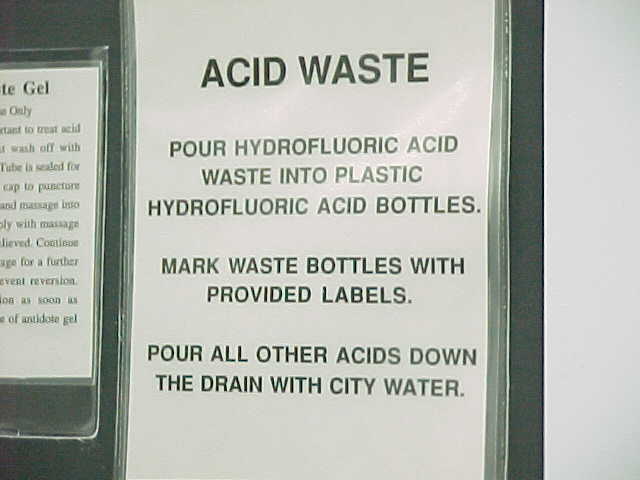
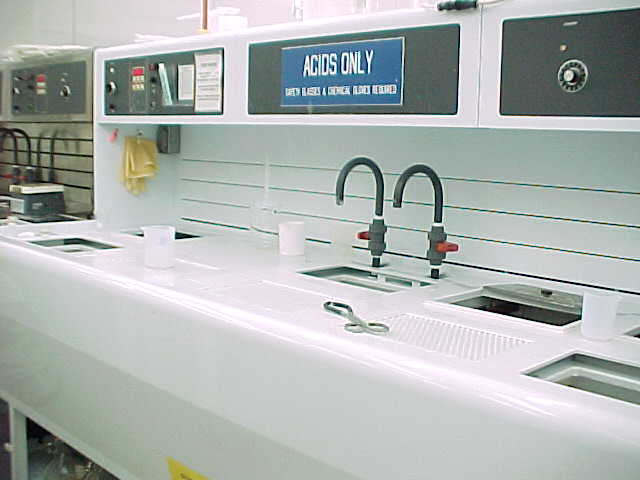
Make sure to keep acids on the acid bench marked "Acids Only". When using HF, sulfuric acid, etc. make sure to be on this bench.
Preliminary steps
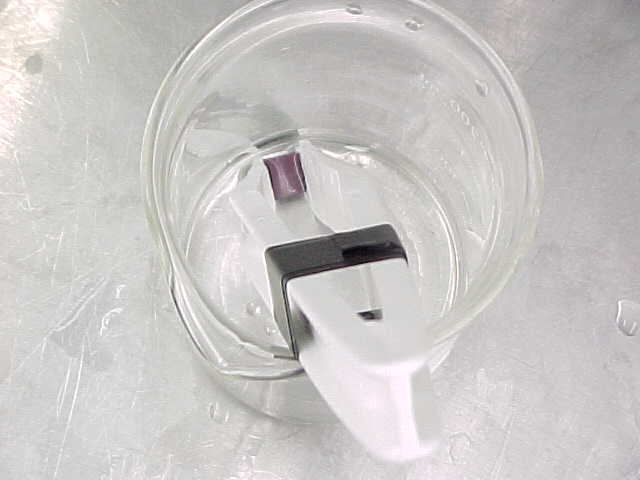
Materials needed:
Beakers
Chip Holder (Tape some grippers as shown above or some other means)
Methanol
Acetone
Hydrofluoric Acid
Hydrogen Peroxide
Sulfuric Acid
Removing Organics
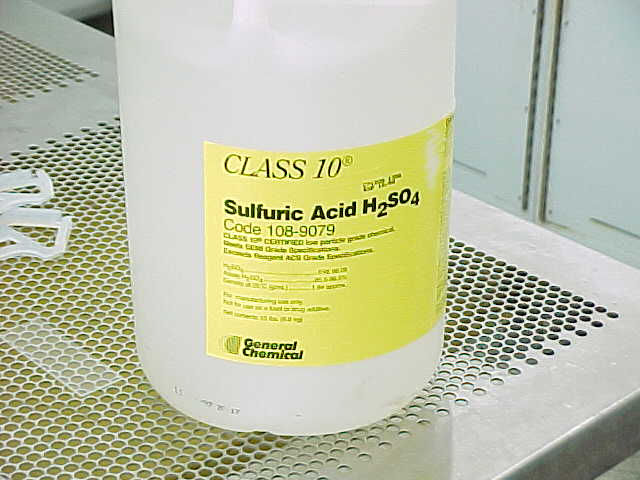
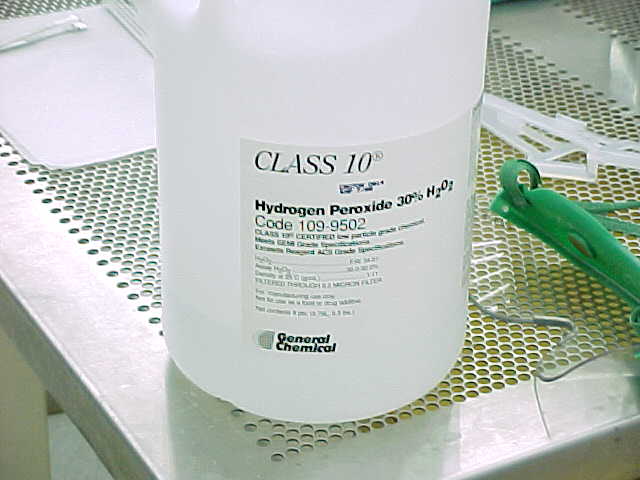
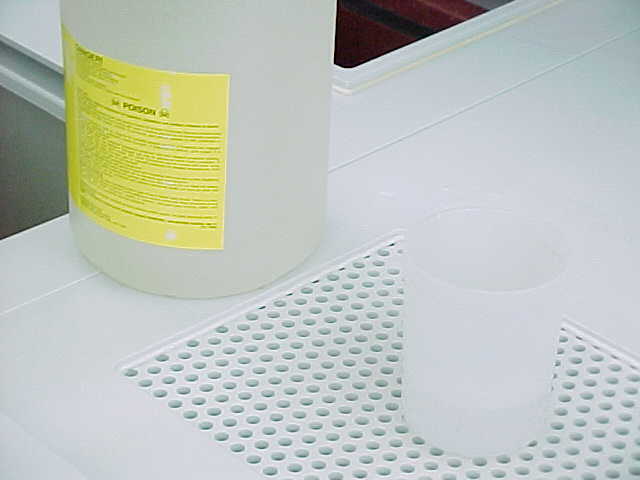
- Get a 3:1 Sulfuric Acid (upper left) to Hydrogen Peroxide (upper right) solution in a plastic beaker (lower). Make sure to pour the Acid into the Peroxide, NOT vice versa. Remember acid to base, acid to water.
An exothermic reaction will ensue (heat will be given off).
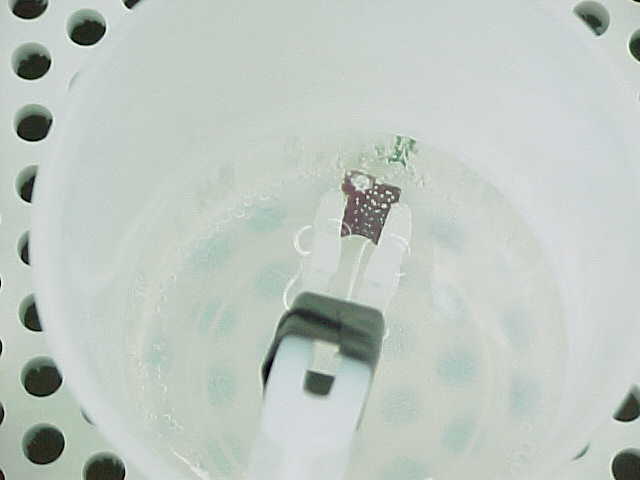
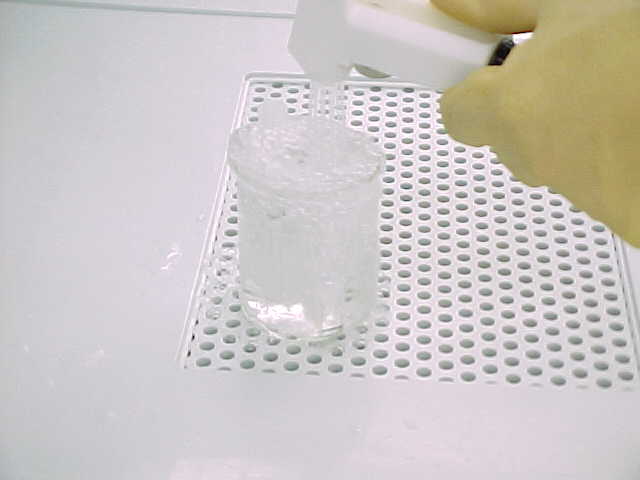
- You will notice bubbling on the chip, do not breathe fumes. Agitate slightly and let chip soak for 10 minutes (left). Remove from solution beaker and place in new DI filled glass beaker and rinse (right) with DI rinser. Moderately fill th
e sink with city water by turning on the 'City Water' faucet for a few seconds, then proceed to dump the acid/peroxide mixture into the sink.
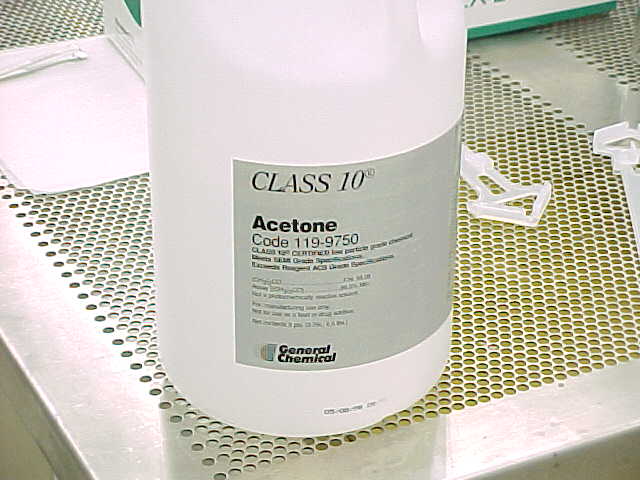
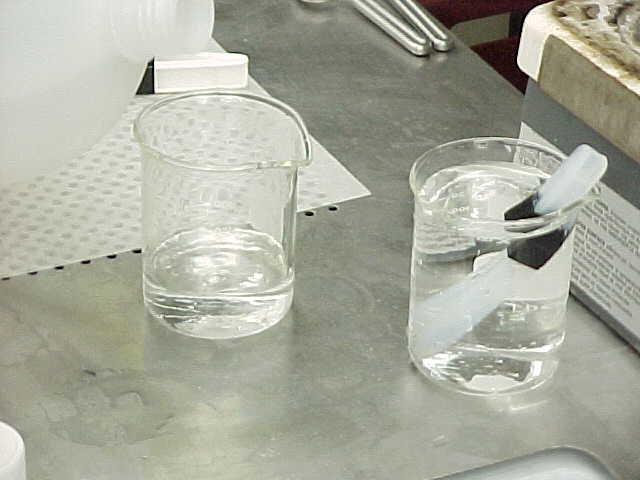
- Prepare an acetone (left) bath by filling a glass beaker with acetone; enough to fully cover the chip as shown on the left beaker. Remove the chip from the DI water beaker and place it into the acetone beaker. Make sure all beakers used are clean from
any residue.
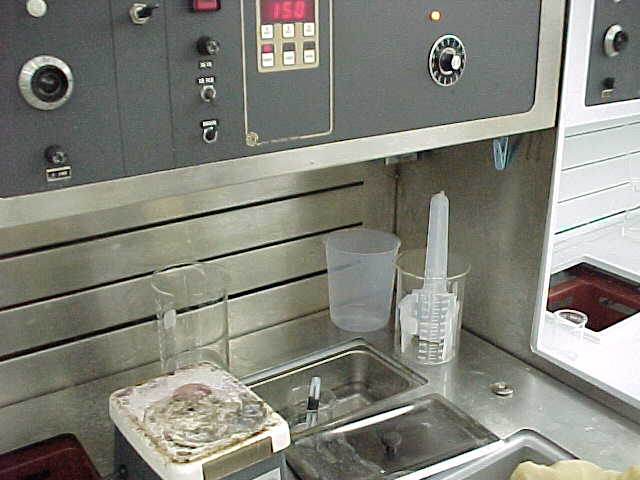
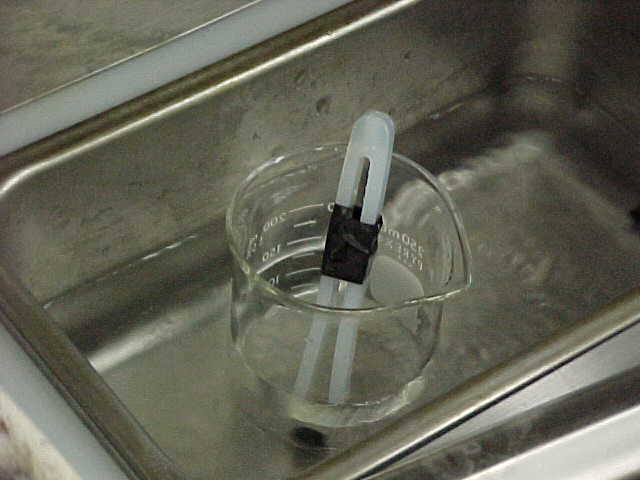
- On the back of the wet bench there is an ultrasonic agitator (left). Fill the agitator with city water and place the acetone beaker and chip inside this bath. Above the bench top, turn the dial for the agitator. Agitate for 20 minutes.
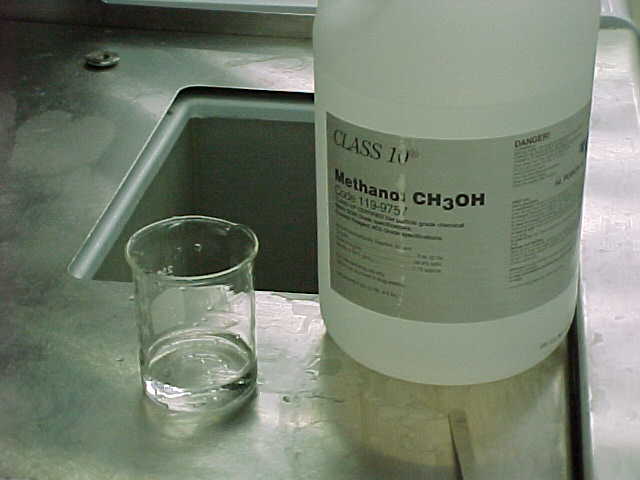
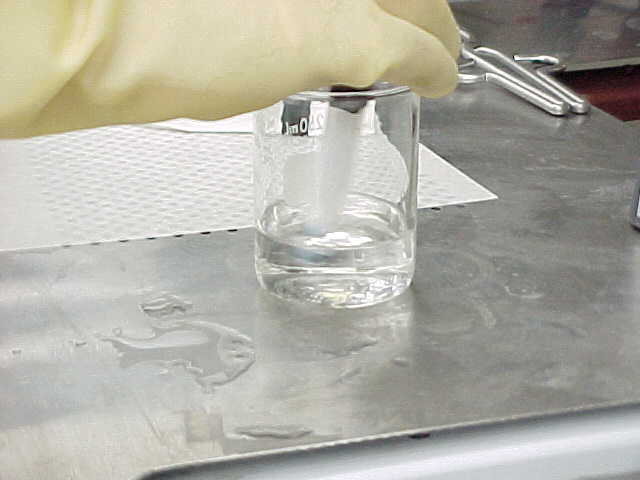
- Prepare a methanol bath in a clean glass beaker; enough to fully cover chip. Remove the chip from the acetone mixture and immediately place in methanol solution. Let sit for 1 minute.
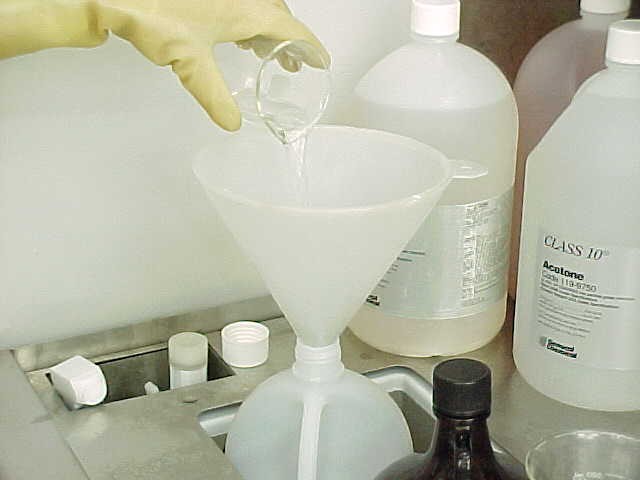
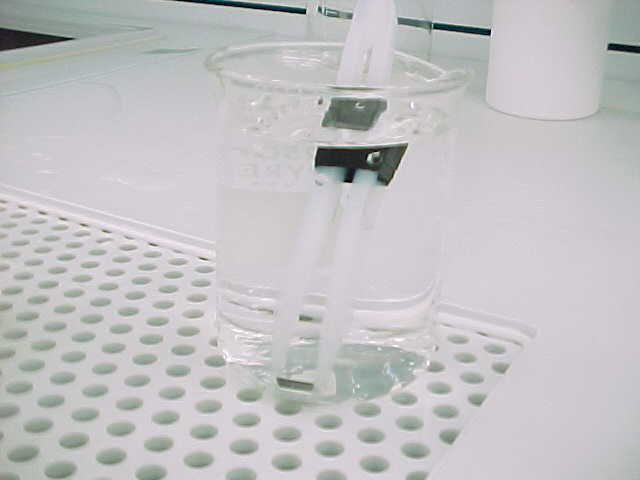
- Dispose of the acetone mixture in the waste acetone/methanol jug (it usually has a funnel on it). After 1 minute in the methanol bath, dispose of methanol solution into the same jug. Rinse the chip in a DI water beaker (right).
Removing Oxide
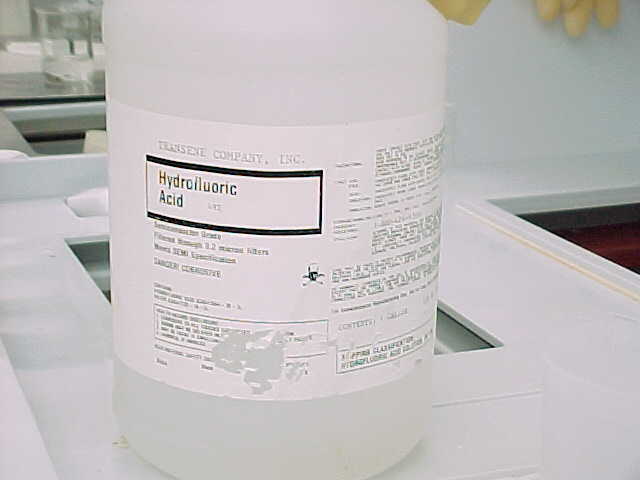
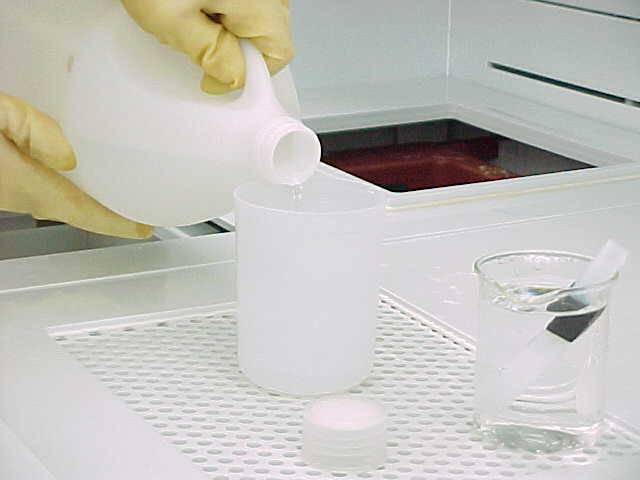
- Prepare a hydroflouric acid (left) solution in a plastic beaker; enough to cover chip. Do not use the buffered HF, its not strong enough. Make sure to pour the acid and keep the acid cap over the drain (right). Soak the chip for 3 minutes, slightly st
irring. Do NOT inhale fumes.
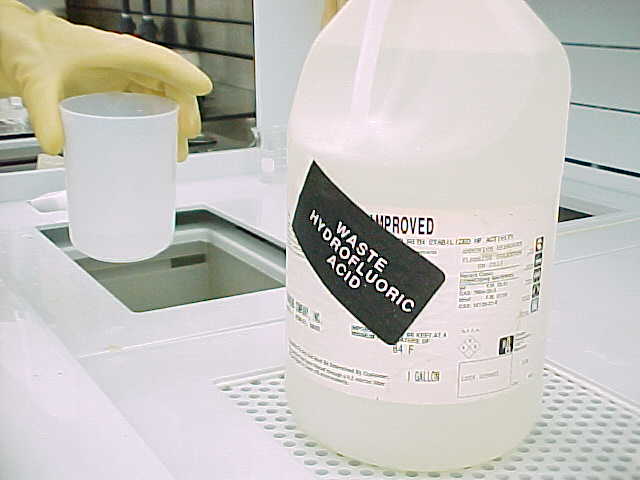

- Dispose of the HF in the marked HF jug. Do not flush down sink. Rinse the beaker thoroughly with DI water. Soak chip in clean DI water beaker for 10 minutes (right).
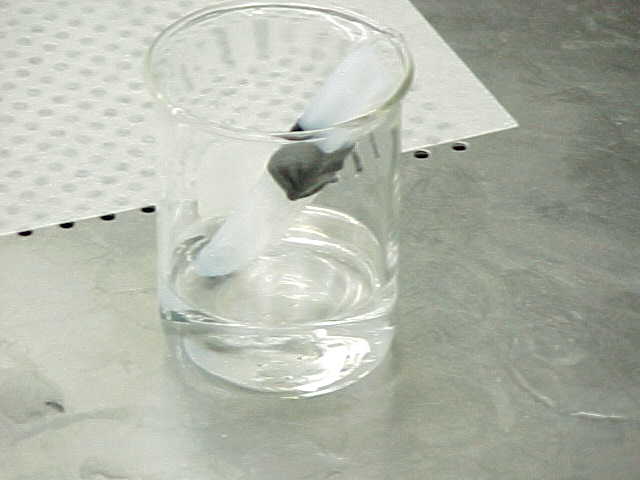
- Place chip in clean glass beaker containing methanol. Soak in methanol for 5 minutes.
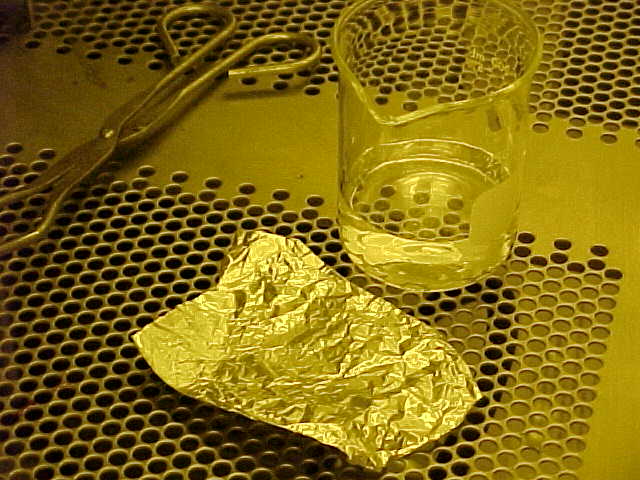
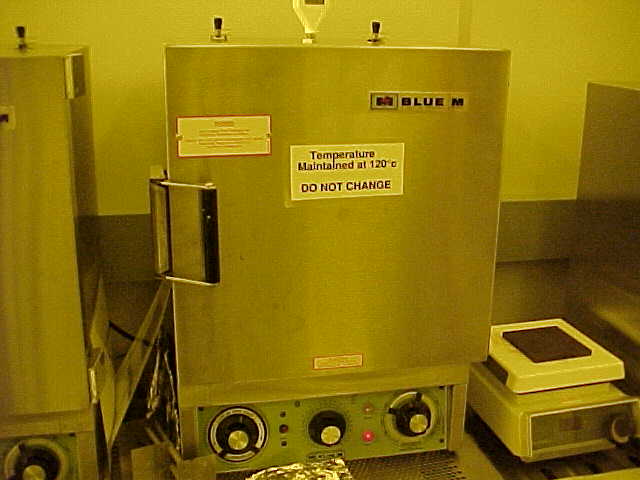
10. Remove chip from holder and place on aluminum foil. Take to oven and bake at 120 degrees Celsius for 15 minutes.